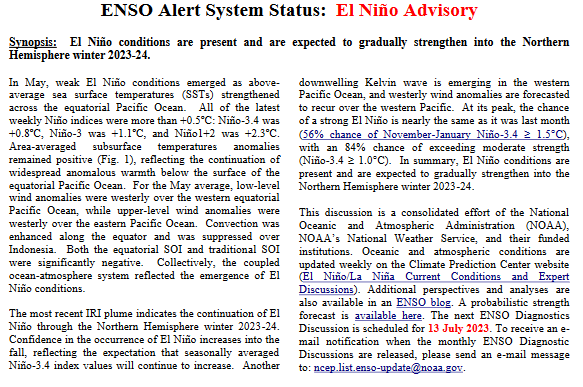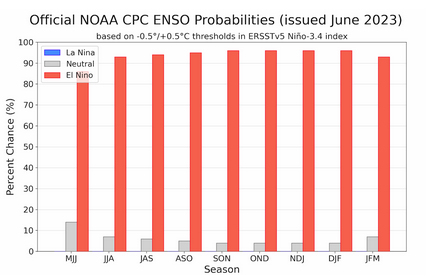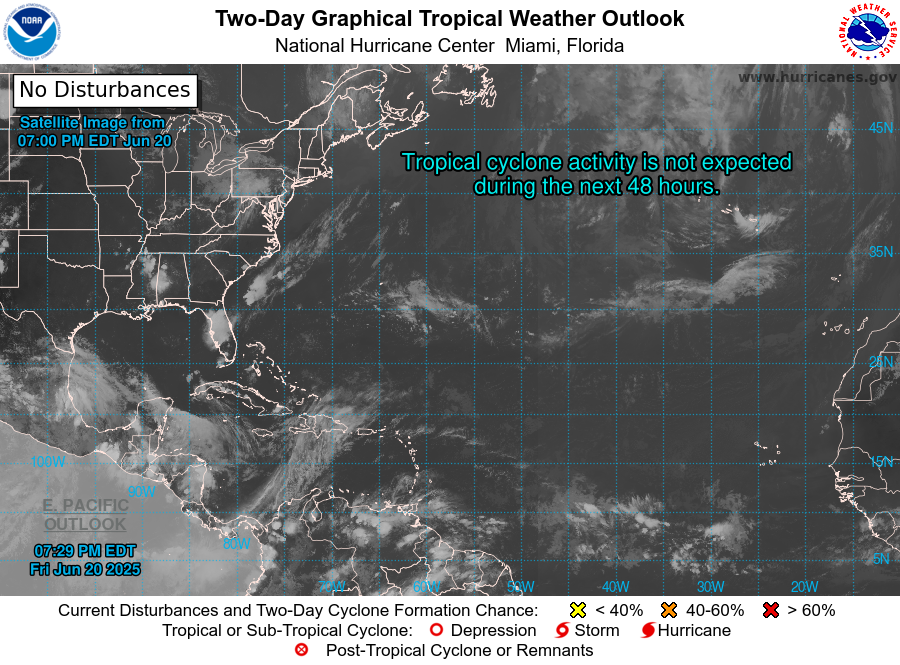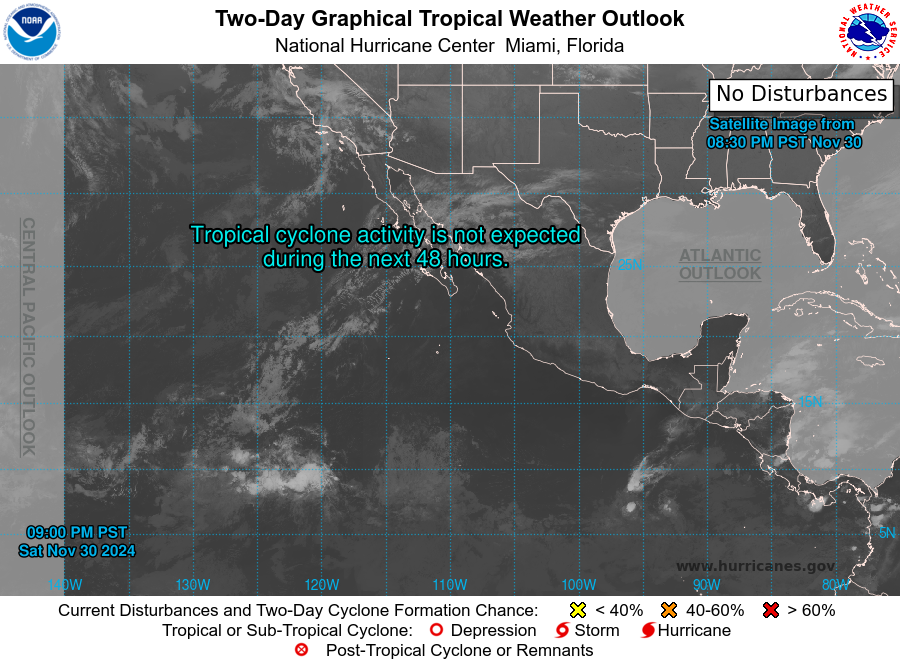Updated at 7:39 p.m. EDT June 16, 2023
Here is what we are paying attention to in the next 48 to 72 hours. The article also includes weather maps for longer-term outlooks and a five-day World weather forecast.
We start with the U.S. Information.
Short Range Forecast Discussion
NWS Weather Prediction Center College Park MD
323 PM EDT Fri Jun 16 2023Valid 00Z Sat Jun 17 2023 – 00Z Mon Jun 19 2023
…Heavy Rain, Flash Flooding and Severe Thunderstorms possible across
portions of the Central Plains, Gulf/East Coast……Record high temperatures possible across portions of central to
southern Texas and across portions of eastern Louisiana; Critical Fire
Weather likely over portions of the Southern Plains and Southwest……Smoke from Canadian wildfires to continue impacting the Upper
Mississippi Valley, Great Lakes, Midwest and interior Northeast…

| Information Note: This article is now set up so that all the maps should automatically update. The links are provided but should not be needed. The downside is that if you go back to a previous version the maps will have been updated and not be relevant to the date of the prior article but will be current information. The NWS twice-a-day 48-hour forecasts do not auto-update in this article. I do it and I can be late doing it. The link for the NWS updates is HERE. Most of our other articles will not be set up to auto-update so that prior versions of the article will be meaningful.
Recently, we published the World Agriculture Report. You can access this report HERE. We also published the June 1 Update of the Colorado and Eastern Great Basin. You can access that article HERE. Remember the easiest way to get back to the article you were reading is to hit the return arrow in the upper left of your screen. There are other ways. |
We start with the ENSO Alert System Update. We were asleep last week and got confused with May. The ENSO Alert status is updated on the second Thursday which was the 8th of this month the earliest in the month it can be. We will provide the full report later but for now the two key slides.

| The key here is the statement “At its peak, the chance of a strong El Niño is nearly the same as it was last month (56% chance of November-January Niño-3.4 ≥ 1.5°C), with an 84% chance of exceeding moderate strength (Niño-3.4 ≥ 1.0°C)”. Get ready. |

| At this point, the real question is about the Spring of next year. |
Back to current weather, first, the 48-Hour Forecast (It is a 48 to 72 Hour Forecast actually)
Daily weather maps. The Day 1 map updates twice a day and the Day 2 and 3 maps update only once a day. These maps update automatically. But if that does not happen, you can get updates by clicking HERE
TODAY (or late in the day the evening/overnight map will appear)
TOMORROW
NEXT DAY
This animation shows how things may play out over the next 60 hours. To update click here.
The NWS Climate Prediction Center’s: Watches, Warnings, and Advisories plus other information can be found HERE.
ATMOSPHERIC RIVERS
This tells us what is approaching the West Coast. Click HERE to update If I have not gotten around to doing the update. Here is some useful information about Atmospheric Rivers.
Continuation of the NWS Short Range Forecast. It is updated by NWS twice a day and these updates can be found here. We post at least one of those updates daily, sometimes both. The Highlights are shown in the lede paragraph of this article.
An active weekend of weather is in store for much of the central Plains
and Southeast, as heavy rainfall and severe thunderstorms are likely
through Sunday. Today, several regions have been highlighted by a Slight
Risk of Excessive Rainfall, as well as a Slight Risk of Severe
Thunderstorms by the Storm Prediction Center, including portions of
eastern Colorado and western Kansas where damaging winds and isolated
large hail are possible. Heavy rainfall rates of 1-2″/hr embedded in
developing thunderstorms will also be possible, which could lead to
isolated instances of flash flooding. Further east, similar risks are
present in parts of the Lower Mississippi Valley and central Gulf Coast,
where showers and thunderstorms initiating along a stationary boundary
draped across the Mid-South will lead to another afternoon of possible
damaging wind gusts, hail, and flash flooding. Isolated severe
thunderstorms may develop this evening across the Mid-Atlantic as a
surface low tracks through the region; however, the greatest threat,
associated with a convective complex that produced severe wind gusts in
New Jersey, has pushed offshore.The flash flooding threat is expected to diminish on Saturday while severe
weather continues across the Plains and Gulf Coast as two distinct surface
fronts, one draped along the Deep South and the other moving through the
Central and Southern Plains, will be the focus for developing
thunderstorms. As a result, an Enhanced Risk of Severe Thunderstorms has
been issued by the Storm Prediction Center for much of Oklahoma and parts
of western Arkansas. The primary threats are damaging wind gusts, large
hail, and isolated tornadoes. Potent cells are also forecast to initiate
over the central Gulf Coast on Saturday afternoon and cause damaging wind
gusts and hail over portions of coastal Mississippi, Alabama, and the
Florida panhandle before moving offshore into the Gulf. The flash flood
and severe thunderstorm threat will continue into Sunday across the
Mid-South as warm, moist Gulf air continues to surge northward behind a
warm front, leading to further initiation of potent cells.Elsewhere, a persistent and stationary upper-level ridge will remain over
southern Texas and Mexico for the foreseeable future, generating record
warmth over southern Texas through the weekend. High temperatures
approaching 100F – 110F in addition to dew points reaching and exceeding
70F will produce dangerous heat indices of 110F – 120F, resulting in
widespread Heat Warnings and Advisories for the region. Repeated and
lengthy exposure to heat of this magnitude can lead to adverse health
risks, so residents should decrease exposure by limiting outdoor
activities and drinking plenty of fluids. Further west, high pressure will
build over the Front Range on the backside of the Great Plains system,
leading to anomalously cool high temperatures for parts of the
Northern/Central Plains/Rockies through Saturday. Furthermore, dry and
windy conditions will support critical fire weather threats over parts of
southeastern Arizona and New Mexico this weekend. Another upper-level
low-pressure system moving through the Northeast and Canadian Maritimes
will circulate Canadian wildfire smoke over the Midwest, Great Lakes, and
interior Northeast this weekend, although it will be much less potent than
last week.
Learn about wave patterns HERE.
Below is the current five-day cumulative forecast of precipitation (Updates can be found HERE)
Now we look at Intermediate-Term “Outlook” maps for three time periods. Days 6 – 10, Days 8 – 14, and Weeks 3 and 4. An outlook differs from a forecast based on how NOAA uses these terms in that an “outlook” presents information as deviation from normal and the likelihood of these deviations.
Below are the links to obtain updates and additional information. They are particularly useful if you happen to be reading this article significantly later than when it was published. I always try to provide readers with the source of the information in my articles.
| Days 6 – 10 (shown in Row 1) | Days 8 – 14 (Shown in Row 2) | Weeks 3 and 4 (Shown in Row 3 but updates only on Fridays) |
| https://www.cpc.ncep.noaa. gov/products/predictions/610day/ | https://www.cpc.ncep .noaa.gov/products/predictions/814day/ | https://www.cpc.ncep.noaa.gov/products/predictions/WK34/ |
Showing the actual maps. They should now update automatically. The Week 3 – 4 Outlook only updates on Fridays. So below is what I call the Intermediate-term outlook. On Fridays, it extends out 28 Days. That declines day by day so on Thursday it only looks out 22 days until the next day when the Week 3 – 4 Outlook is updated and this extends the outlook by one additional week.
| 6
– 10
|
|
|
| 8
– 14 |
|
|
| 3
– 4 |
|
|
HAZARDS OUTLOOKS
Click here for the latest complete Day 3 -7 Hazards forecast which updates only on weekdays. Once a week probably Monday or Tuesday I will update the images. I provided the link for readers to get daily updates on weekdays. Use your own judgment to decide if you need to update these images. I update almost all the images Friday Night for the weekend edition of this Weather Report. So normally readers do not need to update these images but if the weather is changing quickly you may want to.
Temperature month to date can be found at https://hprcc.unl.edu/products/maps/acis/MonthTDeptUS.png
Precipitation month to date can be found at https://hprcc.unl.edu/products/maps/acis /MonthPNormUS.png
World Forecast
Below are the Day 1 -3 and 4-6 forecasts for temperature and precipitation. Updates and much additional information can be obtained HERE
World Temperature Anomalies
World Accumulated Precipitation
This information is provided by the University of Maine. They draw upon many different sources. There is a lot of information available at the link provided. I have just provided two useful forecasts. There are probably over a hundred different forecasts available from this source.
Worldwide Tropical Forecast (This is a NOAA Product)
This graphic updates on Tuesdays) If it has not been updated, you can get the update by clicking here Readers will only have to do that if they are reading this article much later than the date of it being published.
–
Information on Tropical Storms can be found HERE. Western Pacific information can be found HERE.


–
| I hope you found this article interesting and useful. |
–
